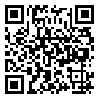BibTeX | RIS | EndNote | Medlars | ProCite | Reference Manager | RefWorks
Send citation to:
URL: http://ppj.phypha.ir/article-1-1206-en.html
Introduction: Abusing drugs such as morphine continues to be a serious medical and social problem. Defining a habit that increases the devastating effect such as compulsive use and craving is necessary. Methods: This experiment was designed in four groups 1) group-housed (GH) 2) isolation 3) group-housed morphine-treated (GHMT) (4) isolated-housed morphine-treated (IHMT). Rats were received morphine (0.75 mg/rat/day) for three weeks for inducing morphine dependence. BrdU (50 mg/kg/day) injection begins from the first day of the experiment and lasted for 21 days for assessing neurogenesis. At the end of experiment sensitization with open field, copper in serum with an atomic spectrophotometer, taste disturbance for bitter (potassium chloride, KCl) and sour (citrate), mood disturbance with tail suspension test, brain-derived neurotrophic factor (BDNF) in CSF with Elisa, malondialdehyde (MDA) in serum with thiobarbituric acid (TBA) and neurogenesis with BrdU staining were assessed. Results: Copper was higher in GHMT rats. Sensitization was higher in IHMT rats. Citrate and KCl consumption were higher in IHMT rats. Time of immobility was higher in IHMT rats. BrdU-positive cells and BDNF were lower in IHMT rats. MDA increased in IHMT rats. Conclusion: Avoiding isolation in a period of morphine injection decreases behaviors that favor morphine abuse. Also avoiding isolation increases neurogenesis that has a positive effect on rewarding center.
| Rights and permissions | |
 |
This work is licensed under a Creative Commons Attribution-NonCommercial 4.0 International License. |





